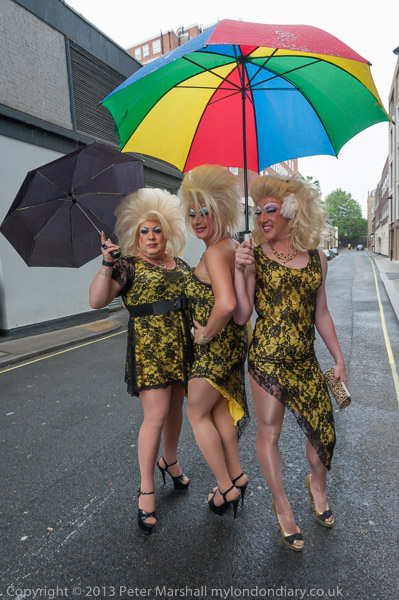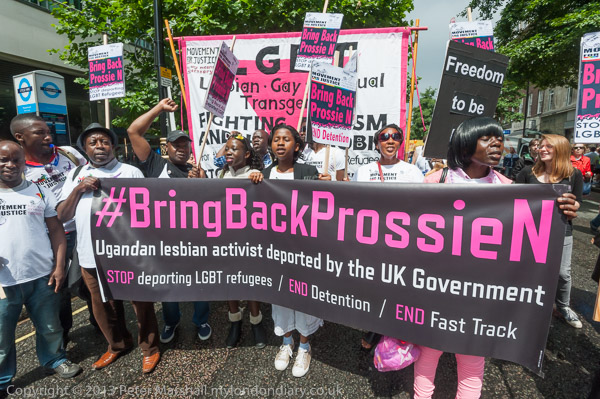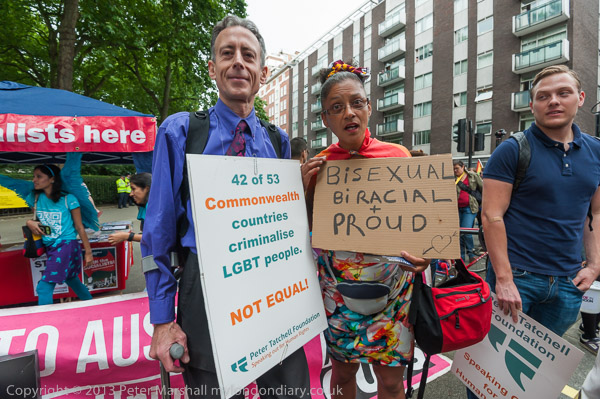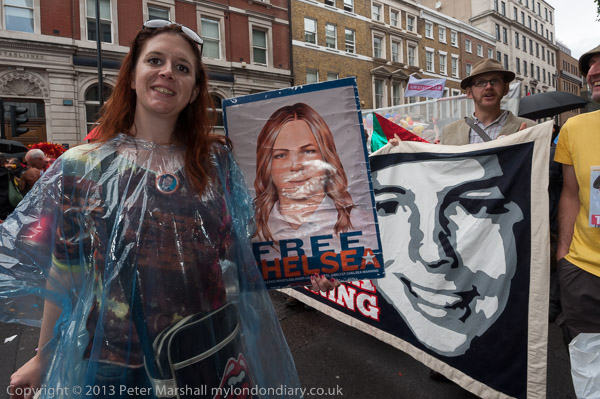
I don’t like taking pictures in the rain. Not that I particularly mind getting wet, certainly not in summer when its reasonably warm. As I was going out a couple of weeks ago when the forecast had been for heavy showers, my wife said to me “Have you got something waterproof” and I replied “Yes, my skin.” It’s what my father used to say. In summer, the light clothing I wear dries out in minutes once it stops raining.

But I also carry a small folded umbrella slipped into the back of my camera bag. It’s light and takes up no usable space, slipping between the outer bag and the protective shell inside. Although it’s there I seldom use it, and almost never when I’m taking pictures. I don’t really have a spare hand and holding an umbrella cuts down mobility, apart from too often wandering into the edges of pictures with the 16mm. Forget it with the fisheye.
I also have a cheap plastic Optech rainsleeve in an outside pocket of the bag, but I’ve yet to use it. I’m sure its a good idea, but somehow I’ve never got around to putting it on. I’ve never actually thought about it until the camera is so wet it seems hardly worth it. I guess it would be worth it for extended periods of rain. It has a drawstring to pull it tight around the lens and a hole for the viewfinder. You are supposed to be able to unscrew then screw back the viewfinder eyepiece to hold it in place, but I’ve never managed to move this on either of my Nikons (even after unlocking by closing the viewfinder shutter) – and if I did manage it, I’d be sure to lose it!
Both the D700 and D800E bodies seem pretty waterproof, and the 16-35mm lens is also quite well sealed, though the 18-105mm definitely isn’t. But I don’t think the sleeve or similar devices would help with my main problems.
I was photographing people getting ready for the annual Pride parade in London, and while there was the odd drop of rain they and I kept going about our business more or less as normal – and when it really pelted down they and I took shelter in doorways along Baker St, emerging as the rain eased off. The umbrellas at least make some of the pictures a little different.

Photographing in light rain, the main problem is with drops of water on the front of the lens – on the UV filter rather than the real glass that this protects. Lens hoods help to keep the rain off, but can’t be very effective for wide-angles. If I’m wearing a jacket I’ll keep the cameras under this as much as possible, but in summer I’m usually just in shirt sleeves.
So its ‘wipe and shoot, wipe and shoot’, holding a microfibre cloth in my left hand, on my palm between hand and camera much of the time. Most of the time I’m cursing myself for being a cheapskate and buying microfibre rather than chamois, which I think works better, but last time I needed a new cloth I didn’t have a lot of cash on me. I try too to wipe any water from the lens barrel too, especially with the 18-105mm which extends to zoom. That barrel changing its length is a pump which takes in moist air and minute water droplets to the lens. The 16-35 has internal zoom and focus, not altering its length at all and is much better in that respect, but in extended damp conditions the large glass surfaces inside tend to get steamed up, diffusing images. I’ve yet to find a solution for that.
But however much you wipe the 77mm filter on the 16-35mm has a terrific attraction for rain-drops, and a fairly high proportion of images taken in the rain are going to suffer from at least one diffuse area because of them. Sod’s law operates to its fullest, and those drops head for the most important areas of your best pictures – or certainly of mine.

Post-processing can save a few, particularly where the defect is in a less important area. Though I used to tell students that every area of their pictures was important and they were responsible for everything in them (latterly I’d say ‘every pixel’) you can get away with more in some areas than others. I’m sure I’ve posted this tip before, but to save you looking it up again should you need it, I have my own Lightroom preset for the Adjustment Brush:
Contrast: 22; Highlight: -22; Clarity: 32;
other settings at 0
Brush with this, then adjust the Exposure setting to suit the individual case. If it looks too contrasty of course you adjust that as well. It can’t entirely solve the problem, but does work wonders. Possibly you could fiddle with the numbers and improve it.

Rain also causes problems with using flash – and I think the picture above is the only one I made using flash fill, though several others would have benefited. But flash illuminates the raindrops and it is seldom a useful effect, and flash units are best kept dry – the high voltages they produce can probably fry the circuit boards if a little dampness helps them short – and if they leak to the hot shoe would be terminal for the camera too, though I’ve often used them in light rain without problems. You can get rainsleeves with room for a flash if you really need to work in heavy weather.
Having photographed the front of the parade starting off, I slowly worked my way back through those waiting to follow it, intending when I got to the back to take the tube and catch up with the front as it reached Trafalgar Square. But it took me so long to take pictures as they waited to leave that this year I didn’t have time to get back to the parade as I had another event to photograph. Some days there is far too much happening in London.
You can see more of my pictures – in which as well as the usual stuff I try to concentrate on the more serious aspects of Pride – at Rain on Pride Parade.
I usually put pictures on My London Diary at least roughly in the order they were taken, there are two sets of pictures here, the first two pages taken with the D800E/18-105mmDX and the rest with the D700/16-35mm. Minor computer problems meant these pictures did not get sorted in ‘Date Taken’ order as usual.
______________________________________________________
My London Diary : Buildings of London : River Lea/Lee Valley : London’s Industrial Heritage
All photographs on this and my other sites, unless otherwise stated, are taken by and copyright of Peter Marshall, and are available for reproduction or can be bought as prints.
To order prints or reproduce images
________________________________________________________